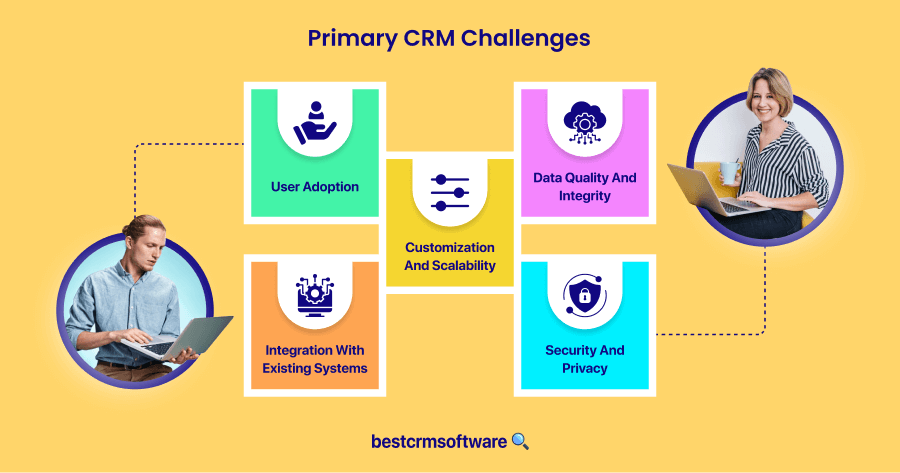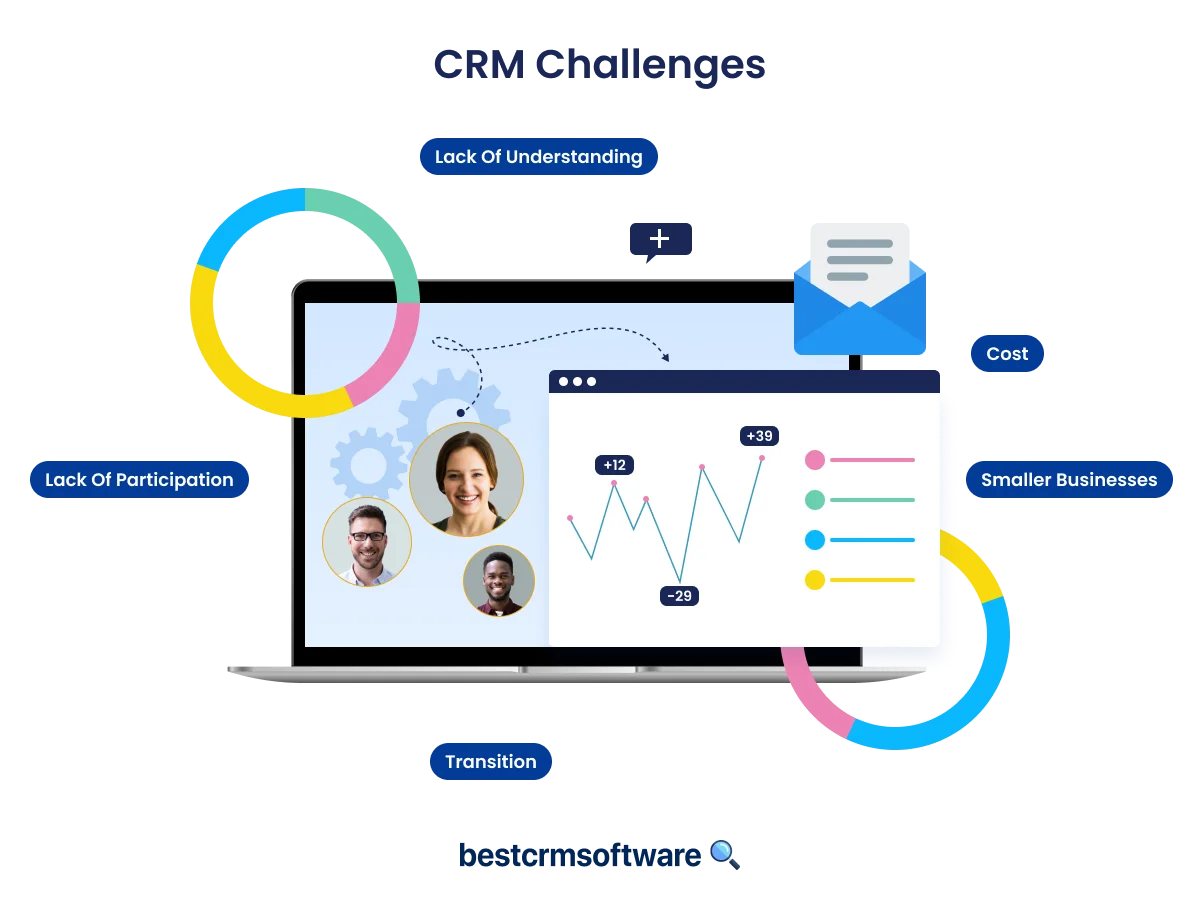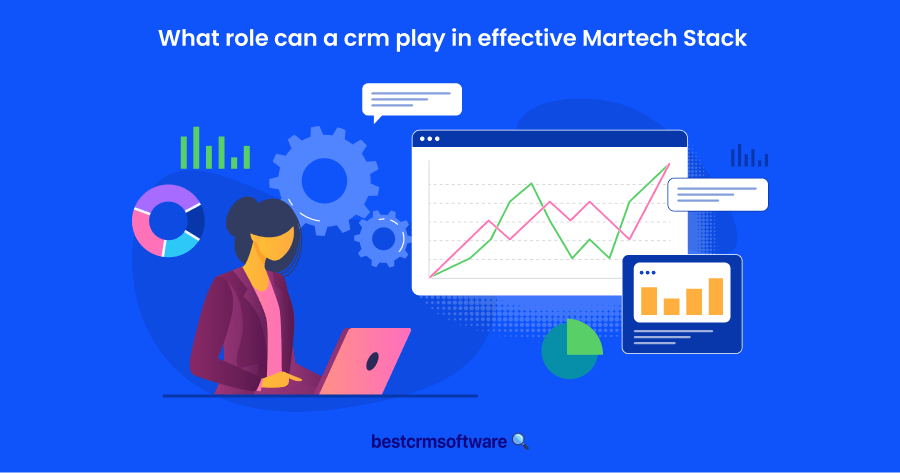
The Biggest CRM Challenges and How To Overcome Them
Key Takeaways
- A CRM system can improve your business operations and help you organize and utilize customer data and insights.
- Key CRM challenges, such as adoption, integration, customization, scalability, data quality, and security can result in CRM implementation failure.
- To successfully implement a CRM, set goals, align it with your business strategy, get stakeholders on board, and provide ample training for employees.
- Choose your CRM solution provider carefully, since you’ll likely rely on their support to overcome some challenges.
A great Customer Relationship Management (CRM) system can greatly improve various aspects of your company. From managing customer interactions to streamlining sales and marketing processes, a CRM can be a revolutionary and powerful tool. Unfortunately, there are also several CRM implementation challenges that can sink your new system before you even get started.
Having spent many years managing CRM systems and their implementations, we’re going to explore several of the top CRM challenges and how to overcome them in this article. Not only will our tips and insights help you identify any possible future problems, it will also help you boost the odds of a successful CRM implementation.
Let’s dive in!
The 5 Primary CRM Challenges Encountered By Companies

It doesn’t matter whether you plan every step of your CRM implementation, or choose the best CRM solution provider; there will be challenges. We’ll discuss the most common of these CRM challenges below. If you can plan for and overcome these challenges of CRM implementation, your chances of success will be significantly better.
User Adoption
People don’t like change, and we’ve seen this time and time again. It doesn’t matter if your team claims to or seems to be excited about the CRM system. Once it launches, and they have to leave the comfort zone provided by their old practices, there will be resistance.
Don’t misunderstand; your team might really be happy about, and excited to use, this new and amazing CRM solution you’ve provided. You may even have spent months getting the buy-in of every member of staff, and they’ll know that using the system will make their lives easier. However, fear of change, skepticism about benefits, and complexity can all squash their desire to use the CRM system.
Your challenge will be getting the team to understand, and be motivated, to use the system long enough – and do so correctly – so that it becomes their new ‘comfort zone’.
Integration with Existing Systems
Chances are that you’re already using existing tools and systems for your sales, marketing, creative, and administrative teams. Now, your goal might be to eventually replace these systems with your CRM software, or you might plan on integrating them with your new platform. Either way, it’s a critical consideration.
Before you choose your preferred CRM, explore its integration capabilities. Ask yourself:
- Will there be compatibility issues?
- Will you be able to migrate data easily?
- Can your communication tools integrate with it seamlessly?
- More importantly, if it’s one of your goals, can the system eventually replace any redundant tools effectively?
Investigate your options thoroughly, and ensure that you determine if integration is possible. If you can’t do so, the CRM implementation fails. Keep this in the forefront of your mind when choosing your CRM software and setting your goals.

Customization and Scalability
Considering customization and scalability is a common mistake that we see many companies make when it comes to choosing a CRM system, particularly if there are budget limitations. The common thought is, “We’ll just adapt to the system.” Unfortunately, that’s one of the worst approaches you can take.
Instead of planning to change your processes to match the CRM system’s capabilities, it’s more important to critically evaluate whether the software can be customized to match your needs. Similarly, you need to consider how much growth you expect to see in the next few years, and whether the CRM can grow with your company according to these projections.
Keep in mind that over-customizing may lead to complexity and maintenance issues, while a lack of scalability can limit your CRM system’s ability to adapt as your needs evolve. The ideal approach would be to find a balance between out-of-the-box functionality and customization. Otherwise, your CRM implementation will, essentially, fail, and you’ll be repeating the exercise in the future.
Data Quality and Integrity
The purpose of any CRM is to help you improve the quality and integrity of your data by giving employees an easy-to-use system to organize and maintain information. Unfortunately, this is also where a lot of CRM implementations fail.
Let’s discuss the principle of ‘Garbage in, garbage out,’ or GIGO – we’ll discuss this a few times within the article. GIGO is, undoubtedly, one of the top challenges of CRM implementation. Essentially, it means that your CRM data will only be as good as the information you and your team put into it.
Data quality challenges usually arise from:
- Lack of employee adoption and buy-in.
- Inconsistent data sources and lack of data validation processes.
- Manual data entry errors.
- Inadequate training and ongoing support.
- Overly complex CRM systems and over-customization.
Consequently, you’ll be basing customer interactions and sales and marketing activities on faulty, incorrect, or incomplete data. To overcome this challenge, you should get the buy-in from all team members, provide them with thorough hands-on training, create a comprehensive and strict data entry process, and regularly perform maintenance.
While it’s not something many companies consider, you’ll need to ensure you get the support of management and executive staff. It’s a common issue we’ve noticed cropping up during and after a CRM implementation – teams will be held to a higher standard than management when it comes to data entry. This causes a trickle-down effect that will eventually lead to the entire team rejecting the system and opting for a GIGO approach.
Security and Privacy
Whether you’re using a CRM system or not, you are responsible for protecting the personal and sensitive information of your clients. There are few things that can be as devastating for a company as a data breach, and it can result in the loss of millions of dollars and massive reputational blows.
Using a CRM does come with risks – after all, you’ll be storing all that sensitive information on a remote server over which you have little control. That’s why you need to look for a CRM solution provider that prioritizes data privacy and cybersecurity. Look for platforms that offer:
- Compliance with regulations like GDPR and CCPA.
- Strong data encryption capabilities.
- Regular automatic remote backups.
- Strict authentication measures and access controls.
Cloud-based CRMs are known to have higher security measures as well, so keep that in mind when you search for the right CRm solution provider.
How To Make A CRM A Success

Set Clearly Defined Goals
One of the first things you need to do to increase your chances of a successful and seamless CRM implementation is to set clear – and achievable – goals. Think about what you really want to achieve with your new CRM system and what it needs to do. In this particular case, we’re talking about your CRM goals rather than the broader company strategy:
- Can the system be customized to match our internal processes?
- Will it integrate with your existing tools, or can it replace them?
- Will the platform scale with you as your business grows and evolves?
- Is it easy to use?
- Does it include all the features you want?
In short, this step is more about considering the critical capabilities and features of the CRM system itself. To that end, you need to set certain goals for the system to have a clear view of what it needs to do and what limitations it has. If you don’t have this information, it’s almost guaranteed that your CRM implementation process will fail.
Align The CRM Strategy With The Company Strategy
Once you know what you need your CRM system to do, you need to align it with your company strategy. While there is some crossover, you’ll need to consider points like:
- Can it help your teams achieve their strategic goals?
- Does your sales team need clearer insights into leads through scoring?
- Do you need visual representations of your sales pipeline?
- Do you want to be able to automate follow-ups or marketing activities?
- Should the system work with social media platforms?
- Does the system need to include project and task management tools?
- Is productivity improvement a key goal?
In this case, it’s more about what you want to achieve with your business, and whether the CRM system can help you do so. Take time to consider your options – if you only need a platform to help your sales team, you won’t want to invest in an expensive all-in-one platform. Conversely, if you need a CRM solution that will work for your sales, marketing, and operational teams, choosing a basic tool to save on expenses will just equate to shooting yourself in the foot.
Get All Stakeholders On Board
This is probably one of the most important factors that will determine whether your CRM implementation and use will succeed or fail. If you want your CRM to be a success, you need the buy-in from all the relevant stakeholders, from top management and executives, to all teams and employees.
The biggest lesson we’ve learned is that, unless your employees see the benefit of the CRM system and understand how it works, they won’t utilize it fully. At best, you’ll experience a lack of adoption, which means wasted resources. At worst, your users will rush data input, compromising on quality. Simply put, if they put garbage in, you’ll only get garbage out (remember GIGO!), and the system will inevitably fail.
To avoid these issues, you need to get every single person on board and, ideally, excited to use the system. Ensure that they understand the benefits, get managerial support to motivate them, and provide any support required to make CRM implementation and ongoing use as easy as possible.
Train Employees And Provide Support
This ties in very well with the previous point. Even if you get every member of your company to buy into the CRM system and commit to its use, lack of training can still result in critical failure. Whether it’s a basic or a complex system, users need to understand how the CRM software works and what they can do with it. If they spend half their time trying to figure out what to do, they’ll either stop using the system or default to GIGO.
If you want a successful CRM implementation, and to get the most out of your CRM software, you need to invest in extensive training and onboarding for your employees. Your CRM solution provider can help with this. Hands-on training is key.
Additionally, it’s just as important to provide ongoing support and resources so that your team can quickly overcome any challenges or get answers to their questions. Not only will your users feel supported, but they’ll be more inclined to utilize the system to its maximum potential.

Conclusion
CRM software can be a game-changer for businesses, helping you identify opportunities, improve interactions, and boost ROI. However, it can also be a challenging process that, if poorly planned for and implemented, can become more of a hindrance than helpful.
With the tips and insights we’ve shared, you should be able to plan for and overcome the most common CRM challenges, whether during implementation or ongoing use. Remember, consider your provider carefully, consider your options and requirements, and invest in ongoing support and training for your team. If you do so, you’ll soon find that your CRM software can completely revolutionize how you work – and you’ll definitely see a good return on this valuable investment.
Check out our other blogs too! Our CRM experts publish helpful content daily, covering topics from how-to guides to CRM requirements for your company.






